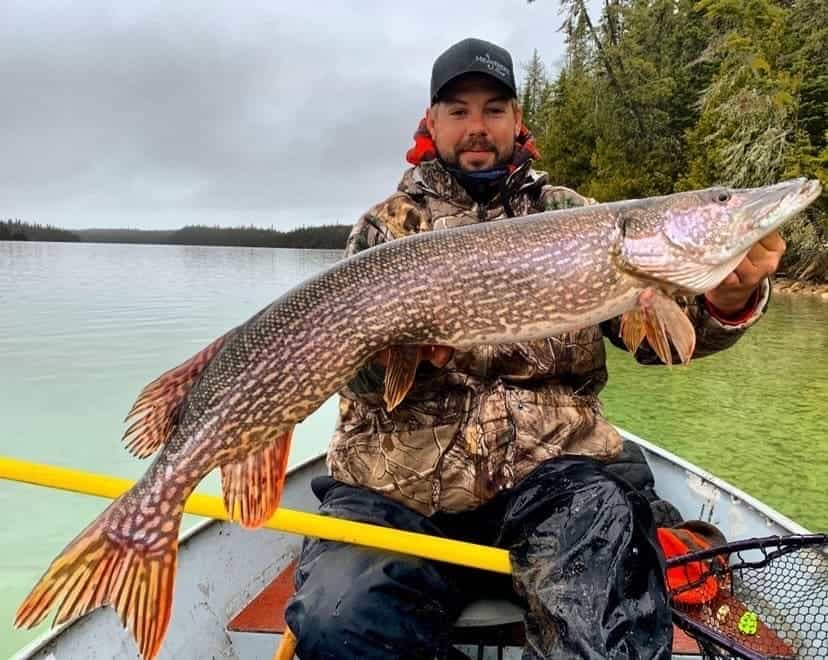
They slash silently through the water, striking unsuspecting prey from ambush. But how do you tell the difference between a Muskie vs Pike? Sharp teeth and long slender bodies capable of fast runs and explosive action…
Long a favorite quarry for sporting anglers around the great lakes region, the Northern Pike, and its close relative the Muskie (Muskellunge) are the stuff of dreams for many anglers.
They are as similar as walleye and sauger, but there are subtle differences that can help you quickly identify each species.
This page contains affiliate links. As an Amazon Associate, I earn from qualifying purchases.
Table of Contents
Are Muskie and Pike the Same?
Muskie and Pike are not the same, although many anglers mistake one for the other. They are very closely related and share some habitat and waterways together, but they are distinctly separate species.
Northern Pike and Muskie are members of the Esox genus. The scientific name for Muskellunge is Esox Masquinongy, and it took almost 70 years for 18th and 19th-century scientists to realize it was a different species from Esox Lucius, the Northern Pike.
A third fish, the Tiger Muskie is a cross between a Muskie and Northern. More on that another time…
How To Tell The Difference
There are three easy indicators you can check to see if you’ve landed a Muskie or a Pike:
- The Tail Fork
- The Patterning
- The Jaw Pores
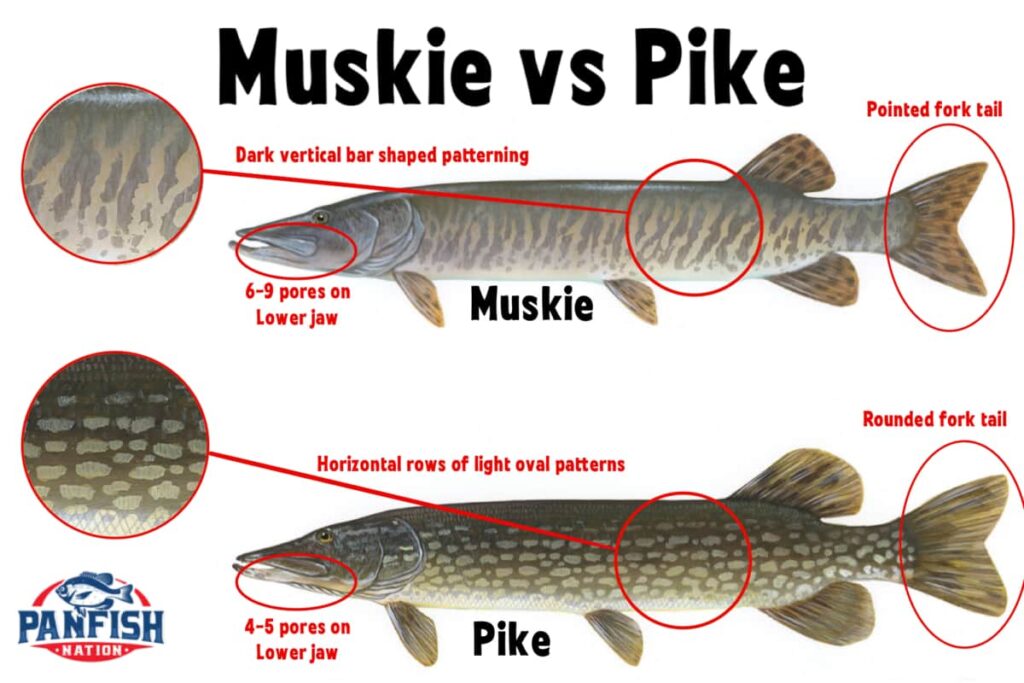
The first is color, Muskie can be clear, with few spots on a greenish/orange body. They can be spotted, resembling a brown trout, or they can have barred coloration, with dark green vertical stripes set against a lighter green background color. You can see from the barred pattern that these ambush predators are perfectly camouflaged in underwater weeds.
The Northern Pike is much more uniform with light yellowish/green horizontal stripes against a dark green body. Their caudal and tail fins are stripped, where Muskie fins are spotted, or plain.
Another identifier is the submandibular pores beneath the jaw. A Muskie has six to nine pores. A Northern has five or fewer pores.
The final check is the scales on the cheeks. A Muskie has scales behind the eye, on the upper level of the cheek. Northern Pike’s cheeks cover the entire cheek and upper area behind the eye.
Muskie vs Pike Size Differences
The record Muskie was caught on Lake Court Oreilles in Wisconsin by Cal Johnson back in 1949. The monster came in at 60 ¼ inches and weighed 67 pounds 8 ounces. Wow!
The record American Northern Pike is an unofficial one, caught by Peter Dubuc on Lake Sacandaga in upstate New York in 1940. The big fish weighed 46-pounds 2 ounces. Giant!
The overall Northern Pike record is from Germany where Lothar Louis landed a 55-pound 1-ounce pike on October 16, 1986. Yes, Germany has excellent Northern Pike fishing!
The Tiger Muskie record is an old one, dating back to 1919 when a 68 pound, 63 ½ inch long Tiger was caught on the Chippewa Flowage in Sawyer County, Wisconsin.
Muskie vs Pike Taste
Muskie and Pike have a very similar texture and taste; they are both long slender fish with many bones. When properly prepared, they can be very good eating, however, most anglers prefer a more delicate and flaky fish such as Walleye or Black Crappie.
The consensus in the angling community is that Musky should be released. For that reason, they are not usually kept for dinner. In certain water bodies, Musky can also accumulate high levels of Mercury, which means you should limit their consumption.
However, when regulations allow for it Muskie can in fact be good eating! Care must be taken when cleaning the fish. They have a lot of bones, but when properly prepared Muskie can be very good.
Pike are much more common table fair, however, they too have a lot of bones and caution must be used when cleaning them. The video below gives a great explanation of the anatomy of these fish and how to prepare them for a tasty meal:
Where to Find Muskie
Muskie are a uniquely American species and only found in a handful of states. Hence their nickname “The fish of 10,000 casts”.
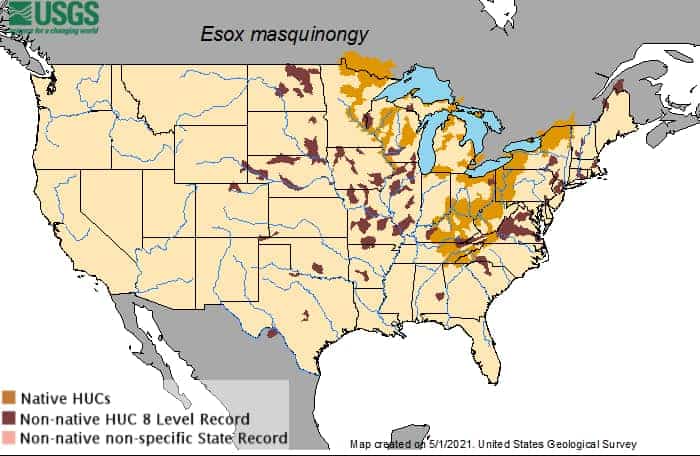
The original, natural range of the Muskie was from Tennessee to Ontario and New York to Minnesota. The heaviest concentration was in the Great Lakes. Today, Muskie have been stocked in other states across the nation such as Missouri, the Dakotas, Nebraska and Oklahoma.
You May Also Like: The 7 Best Crappie Lakes In Minnesota (With Tips!)
Muskie prefer lakes and rivers with variable bottom cover. They search for submerged trees, with heavy vegetation. Find the wees! These fish love to use there slender bodies to wait to ambush prey. You won’t find them often in clear, open water or over a sandy bottom.
Where to Find Pike
Northern Pike are found all over the world in the Northern Hemisphere. In the United States they are native to the great lakes region and have been stocked and introduced as far south as texas and Georgia.
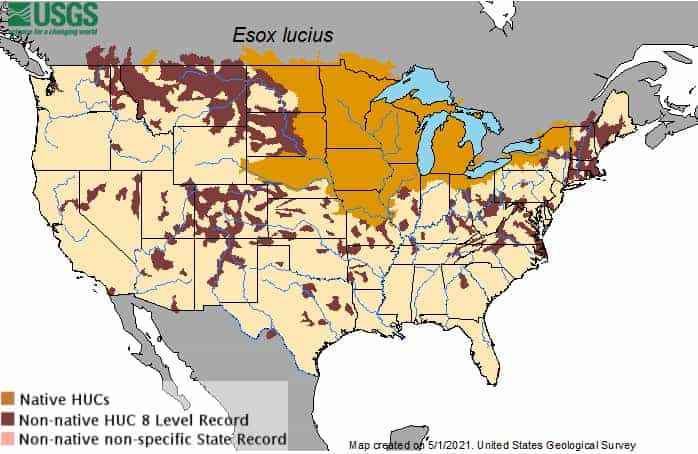
Their range is one of the greatest on the planet. If you were to draw a line around the earth from New York to Moscow, you’ll find Northern Pike occurring naturally above that line.
In Europe, Pike fishing is very popular in countries like Germany, Denmark, Finland and Russia. In the United States the Great Lakes region and upper midwest have the heaviest concentration of North Pike.
Pike Fishing Tips
Northern Pike are aggressive, maybe the only North American fish with a worse disposition than the largemouth bass. They’ll hit just about anything, but they are most attracted to brightly colored, noisy lures with bucktails.
If you’re trolling, set the trolling motor on high and cover the lake. If you’ve worked the water for a while without success, move on to a new spot.
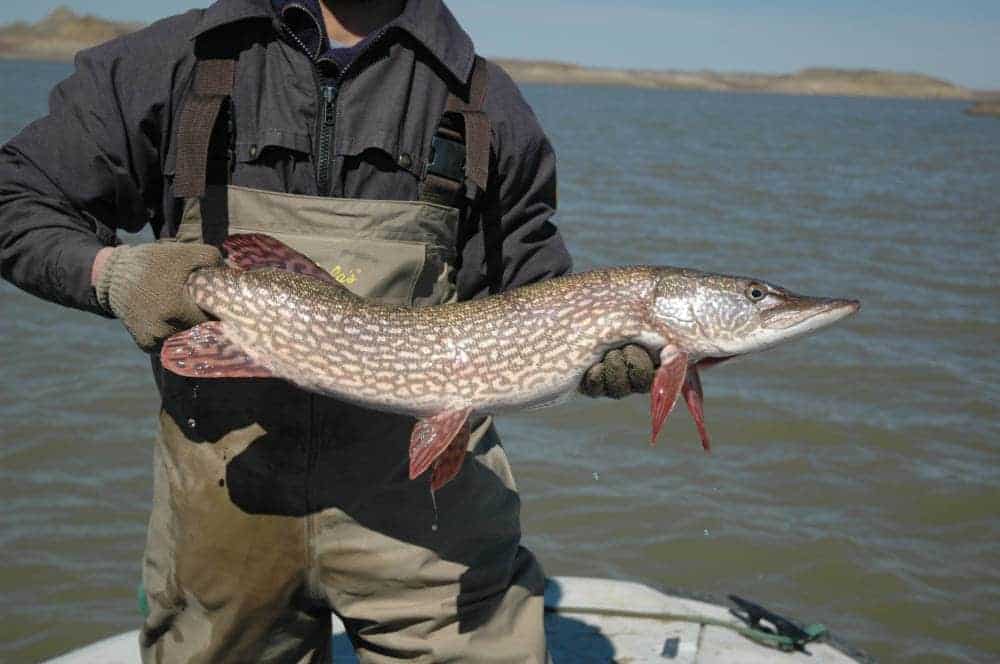
A baitcasting reel with braided line provides the power and control you need to battle a big Northern that hits your bait. The one essential item you need whether you’re after Pike or Muskie is a steel leader. These fish can bite through regular lines with ease. They can’t cut steel.
Suckers, shad, fathead minnows, and frogs are the best natural bait and any lure that mimics these works well too. If there are Northerns in the water, they’ll hit these.
Muskie Fishing Tips
Muskie requires the same tackle as Northern Pike. The best live bait is the white sucker. If you’re after a big Muskie hook a 12 to 14-inch sucker on a 4/0 single or treble hook is the preferred bait.
Toss the sucker near vegetation and let it swim with just a little pressure to guide it. Keep it just on the edge of the dense weeds.
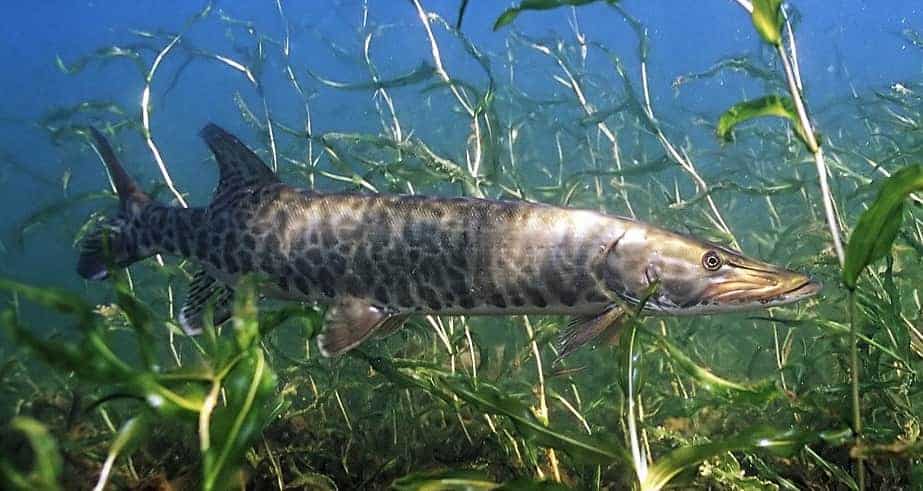
The conventional wisdom calls the Muskie the fish of ten thousand casts. The biggest spinner you can find, with large bucktails trailing behind works well.
Six-inch or larger Rapala and floating mouse lures are effective. Toss them in channels near exposed grass, weeds, and submerged logs with a quick retrieve.
Muskie lures are usually very big, very loud, and very colorful. You want to use baits that are aggressive to trigger that predatory response. In many cases, Muskie will follow your lure all the way to the boat and strike at the very last moment- Hang on!

Conclusion
Epic battles with a rod bent almost in half, with the drag screaming as the line rolls out at a blistering pace are just a few of the thrills waiting for you when you hook into one of these ferocious fish.
You’ll hear them called freshwater barracuda, and when you hook one, you’ll probably share that opinion.
Get out the map, find a lake or river with known populations of Northern Pike or Muskie, and get out there. Scout the area first, then take the plunge. It’s not going to be easy to snag a good-sized one, but nothing good is ever easy. Good luck!
P.S. If you’re looking for a great book to assist with identifying all species of freshwater fish, check out Ken Schultz’s Field Guide to Freshwater Fish. It’s packed with great content and photos!
See Also: Sauger vs Walleye – Learn These Differences and Catch More!
If you haven’t guessed yet, I love fishing and everything about it!
To learn more about why I started Panfish Nation, visit the About page and follow along on Social Media:


Download a copy of my FREE Lure Color Selection Chart & Knot Guide!
Stay up to date with fishing reports, tackle reviews, industry news, and much more! We respect your privacy, unsubscribe at any time.
Like this post? Save it on Pinterest.

- Sauger vs Walleye: Learn These Differences and Catch More!
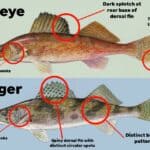
- How To Hold A Bluegill: Tips and Best Practices
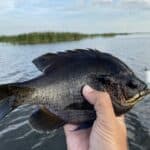
- How To Catch Wild Shiners For Bait (Step By Step W/Pics)
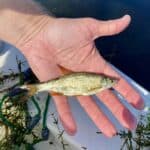
- Crazy Facts About the World Record Crappie

- What Size Hooks for Smallmouth Bass? Quick Guide

- Large and in Charge-Mouth: 10 of the Best Bass Lures of All Time (And Where to Buy Them)

